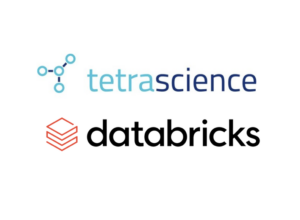B2B Businesses Tap Embedded Analytics to Unlock Data Silos

There is more data being generated today in the business-to-business (B2B) arena than ever before. And with J.P. Morgan Chase’s launch of its media platform last week, the value of using this data to power analytics is top of mind — particularly for B2B players.
That’s because, in an era where data is king, B2B businesses can drive competitive differentiation by providing users with real-time and embedded insights that enable them to make informed decisions quickly. Whether it’s analyzing sales trends, customer behavior, or operations, access to timely data that is served up with minimal disruption to the workflow can enhance decision-making processes.
The integration of embedded analytics ensures that decision-makers have immediate access to relevant data, enabling them to make informed decisions that take advantage of opportunities.
B2B organizations that can leverage data as an asset are able to drive growth and activate insights.
And in a business landscape where uncertainty reigns supreme, and far-ranging supply chain disruptions can happen out of the blue, the ability to leverage leading, versus lagging, indicators is becoming more valuable than ever.
Read more: The Power of Precision: Driving Revenue From B2B Customer Data
Benefits of Data-Rich Environments
One of the advantages of embedding analytics is the ability for businesses to gain insights across various aspects of their operations while removing the obstacles inherent to siloed analytics or local solutions that are stored in separate systems or departments.
But beyond that, data is at the core of many digital transformation initiatives. By embracing a modern core infrastructure, firms can move faster with payments automation, creating access to better, more actionable insights, while at the same time offering their B2B partners more personalized experiences end to end.
“Businesses are becoming much more aware and much more savvy about how to operate digitally,” James Butland, U.K. managing director at Mangopay, told PYMNTS in January.
Echoing that sentiment, Enigma Technologies CEO Hicham Oudghiri told PYMNTS in November that, “companies are being pushed to innovate. … They have the technologies they need to innovate, and they have a lot more market adoption when they do innovate.”
And embedded data analytics represents an opportunity area for B2B innovation, allowing firms to streamline workflows by eliminating the need for users to switch between multiple applications to access relevant data. This creates a seamless user experience, increasing productivity and letting employees analyze data and take action within the same interface, reducing friction in the process.
“Digital transformation has really enabled us to evolve,” PayByPhone CFO Nick Hamill told PYMNTS.
Read more: B2B is Going Digital and Getting More Personal
Data Is the Core of Digital Transformation
At the end of 2023, PYMNTS Intelligence in “Digital Payments Technology: Investing in Payments Systems for the Digital Economy” revealed that the 250 CFOs surveyed were prioritizing their system investments based on long-term growth and profitability considerations.
“Technology helps us to be proactive in our approach rather than reactive or a lagging indicator of what’s happening. And with leading indicators, it allows us as a business to pivot, or course correct, or double down when necessary,” Amy Wang, CFO at Procurify, told PYMNTS.
Embracing new technologies allows firms to enhance their efficiency and the speed of decision-making, as well as their competitiveness relative to their peers.
“The moment you slice the world through the lens of historical transactional behavior, you can then leverage a predictive framework. … It’s evolutionary in terms of how businesses can operate,” Pecan CEO and Co-founder Zohar Bronfman told PYMNTS.
PYMNTS Intelligence in the inaugural edition of “The 2024 Certainty Project Report” finds that uncertainty costs middle-market companies more than $20 million on average. Embedded data analytics can help firms add more flexibility to their operations.
As was highlighted here earlier, as businesses move forward the innovation spotlight is increasingly becoming focused on interoperability — the ability of different systems and devices to work together seamlessly. Interoperability is the bridge that connects diverse technologies, allowing them to share data, functionality and services. The goal is to break down silos, fostering an environment where users can enjoy an integrated experience across devices and platforms.
Embedded analytics could be a lynchpin in this emerging ecosystem.



